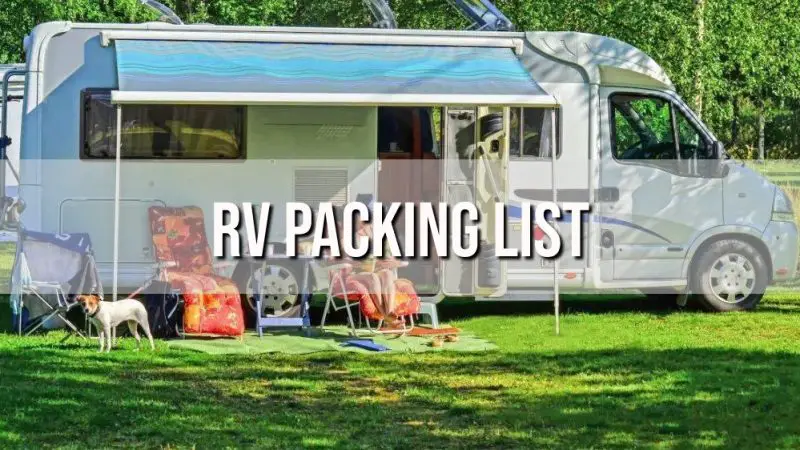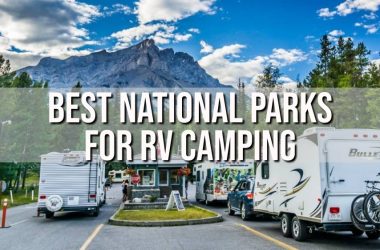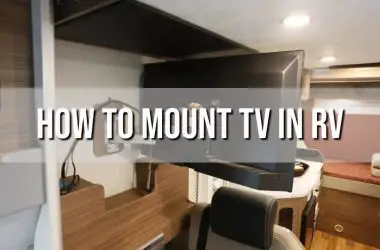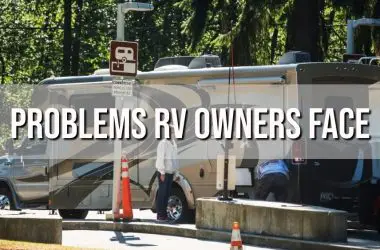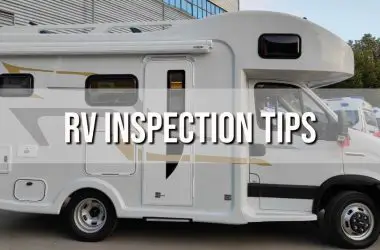Preparing for an RV road trip adventure requires thoughtful planning and packing. For new RV owners getting ready for their maiden voyage, knowing what to bring can be overwhelming. To help first-time travelers pack properly, we’ve created this comprehensive RV packing list.
Use this RV checklist to ensure you have all the essentials needed for a smooth and enjoyable RV trip. We cover critical gear for cooking, sleeping, bathing, safety, maintenance, recreation and entertainment. With handy packing tips and setup guidance, this road trip checklist has everything new RV travelers need to prepare for an epic adventure on the open road!
Key Takeaways
- Stock up on RV-friendly cooking tools, dishes, camp chairs and basic equipment.
- Pack linens, towels, composting toilet supplies and space-saving toiletries.
- Include first aid kits, fire extinguishers and emergency roadside tools.
- Bring maintenance items like hoses, electrical cords and cleaning supplies.
- Load up on personal items, clothes, entertainment gadgets and ice/water.
- Use packing organizers, labels and lists to keep track of gear.
- Inspect and restock the RV between trips.
Understanding Your RV
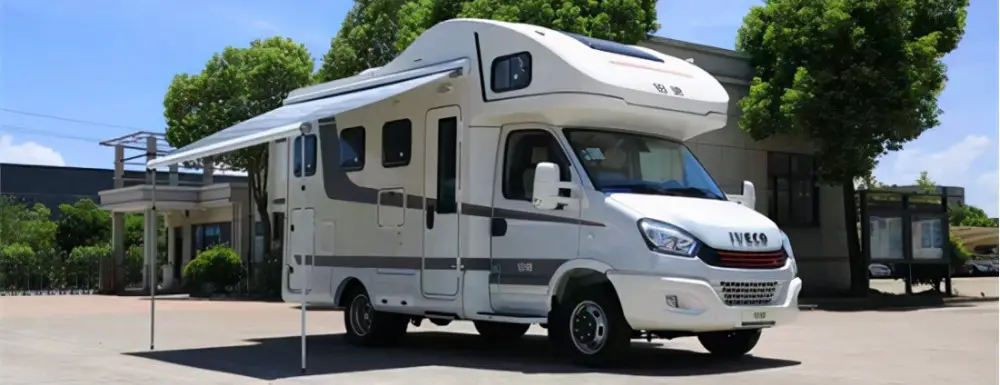
The first step in packing is understanding what equipment and amenities are already built into your RV. This will determine what additional items you need to provide for cooking, sleeping, bathing and living while on the road.
If you are renting an RV, request a list of included gear from the rental company. If you own the RV, inspect all storage compartments, cabinets, closets and onboard systems to see what is available. Make sure all factory-installed equipment like stoves, refrigerators, beds, sinks, pumps, generators, and electronics are functioning properly. Identify any gaps you need to fill with your own supplies.
Being familiar with your RV model helps maximize limited storage and prevent overpacking.
Essential RV Equipment
While RVs contain many built-in systems, there is still some basic equipment every traveler needs to provide for themselves. Here are some RV essentials to include on your packing list:
- Leveling blocks – Provides stability and prevents shifting while parked.
- Wheel chocks – Place behind tires to prevent rolling.
- Hose and nozzle – For hooking up to water sources and rinsing the RV exterior.
- Sewer hoses – Needed to connect to dump stations for waste removal.
- Extension cords – Power hookups if you’ll be without a campsite electrical supply.
- Power strip – Wide outlets for plugging in multiple devices.
- Drinking water hose – Food grade hose for direct potable water line hookups.
- Water pressure regulator – Helps adjust psi levels from external water sources.
- Hitch lock – Deter theft and stabilize trailer connection when parked.
- Covers – Protect tires, windows, vents, and windshield from sun damage and weather.
Having this basic RV gear means you’ll be fully equipped when pulling into any campsite or boondocking location.
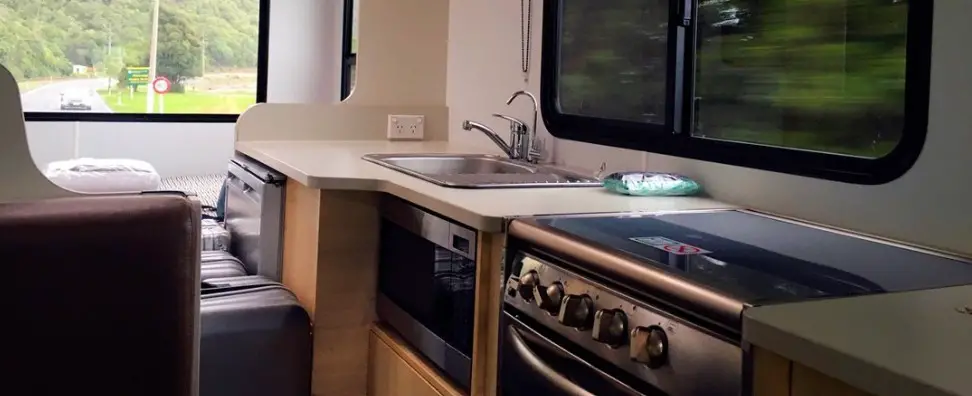
Kitchen Essentials
The RV kitchen functions much like one at home but in tighter quarters. Pack RV-friendly cooking tools, dishes and pantry staples to cook meals on the road.
Cooking Equipment
- Induction cooktop or portable burner
- Grill and fuel
- Pots, pans and lids
- Kettle
- Cutting board and knives
- Mixing bowls
- Colander and strainer
- Measuring cups and spoons
- Salt and pepper
- Spices
- Olive oil, cooking spray
- Coffee maker or coffee press
- Toaster
- Paper towels
- Trash bags
- Ziploc bags
- Aluminum foil
- Plastic wrap
Eating Utensils
- Plates
- Bowls
- Glasses and mugs
- Flatware
- Can opener
- Bottle opener
- Corkscrew
- Storage containers
- Lunchboxes
- Cooler
- Picnic basket
- Camp table and chairs
Having this range of supplies means you can cook, eat and clean up efficiently in the confines of an RV kitchen.
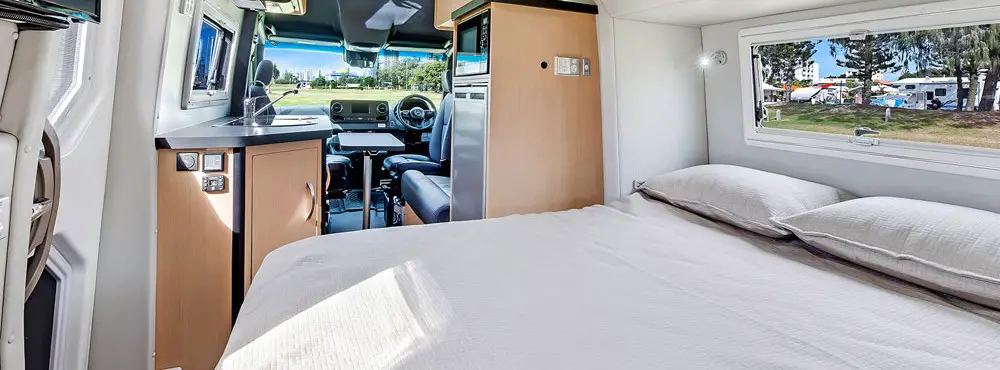
Bedroom Essentials
One perk of RV travel is the ability to bring your own bedding and linens instead of relying on hotel or rental supplies. Pack these items for getting comfy in your RV bedroom:
- Sheets (fitted and flat)
- Pillows
- Blankets or comforter
- Mattress pad or cover
- Memory foam mattress topper (for fold down beds)
- Pillow covers
- Duvet or quilt
- Sleeping bag (for extra bedding)
Also include:
- Clothing and pajamas
- Extra blankets/throws
- Hangers
- Laundry bag
With your own bedding and linens, you’ll sleep soundly like you would at home.
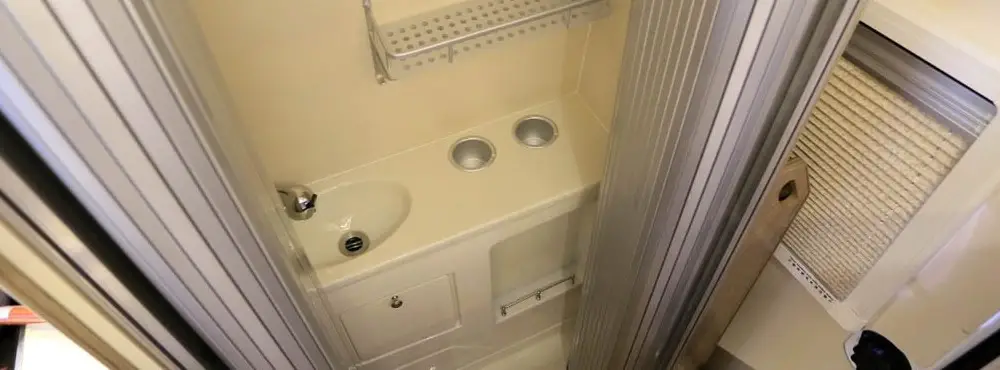
Bathroom Essentials
RV bathrooms are functional but tight on space. Choose multipurpose items and space-saving containers for bathing and hygiene on the road.
- Composting toilet supplies or RV-safe toilet paper
- Portable shower or collapsible bucket
- Baby wipes and facial wipes (for sponge baths)
- Shampoo, soap and conditioner
- Toothbrush, toothpaste, floss
- Deodorant
- Razor and shaving cream
- Sunscreen and moisturizer
- First aid kit
- Hairbrush and hair ties
- Makeup and cosmetics
- Towels and washcloths
- Bath mat
- Shower shoes
- Robe
Look for tear-free, moisture-proof, pump or bar soaps that won’t leave a mess in the RV shower. Use hanging organizers, shelves, and magnetic containers to keep bathroom items in place while in motion.
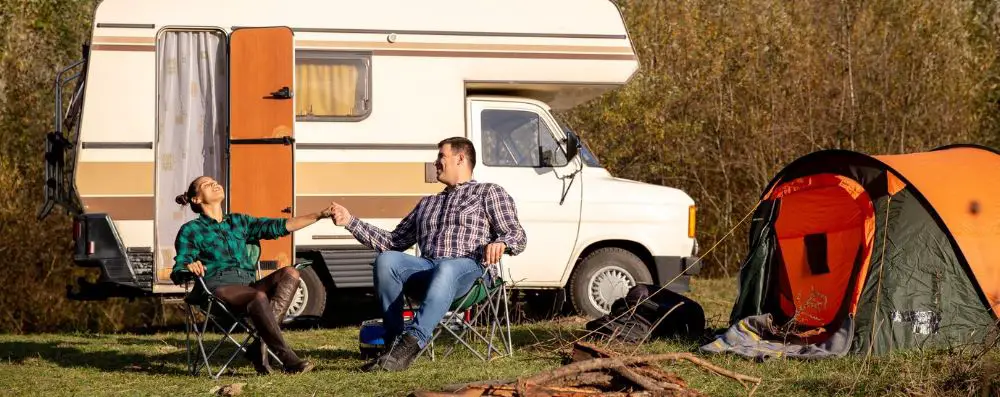
Outdoor Essentials
One advantage of RVing is the ability to enjoy the outdoors right from your home on wheels. Pack gear needed for camping, exploring destinations, and having fun in nature.
Camping Equipment
- Flashlights and lanterns
- Headlamps
- Extra batteries
- Lighters and matches
- Firewood and kindling
- Firestarter bricks
- Campfire griddle
- Marshmallow roasting sticks
- Folding chairs
- Folding table
- Mats, rugs, pillows
- Bug spray
- Sunshade tent, umbrellas
- Hammock
Outdoor Recreation
- Bikes and helmets
- Fishing poles and tackle
- Kayaks, canoes or paddleboards
- Hiking shoes or boots
- Backpacks and hydration packs
- Cooler for drinks/snacks
- Sports equipment like balls, frisbees, bats, gloves, etc.
- Skiing, snowboarding, sledding gear in winter
Load up on items tailored to your interests like yoga gear, birding binoculars or rock climbing equipment. The right outdoor equipment opens a world of adventure.
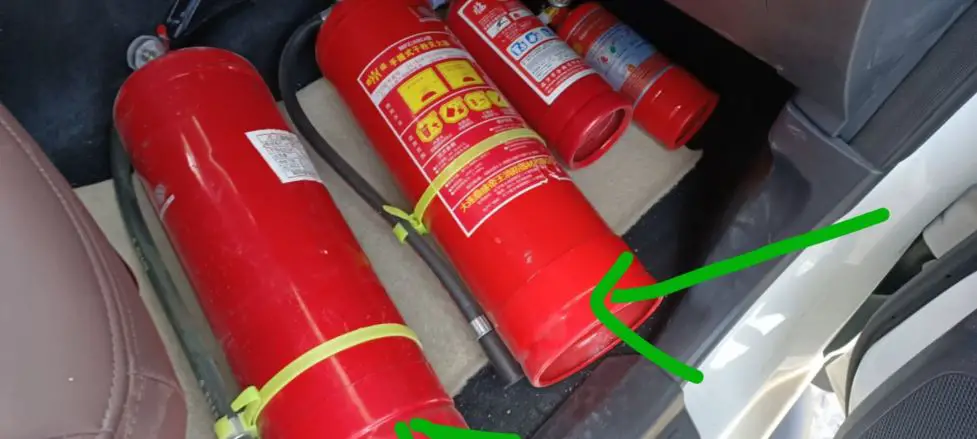
Safety and Emergency Gear
Safety is paramount, especially for new RVers venturing to remote campsites. Pack these RV emergency essentials:
- First aid kit
- Fire extinguisher
- Smoke detector
- Carbon monoxide detector
- Propane gas detector
- Flashlights
- Roadside emergency kit with flares, cones, jumper cables, tools, tire gauge, gloves, etc.
- Ax or hatchet (for emergencies)
- Multi-tool or Swiss Army Knife
- Warm blankets
- Spare fuses and light bulbs
- Duct tape
- Bungee cords
- Sewing kit
- Tire repair kit
- Safety vests
- Walkie talkies or emergency radios
- GPS navigation device
- Emergency whistle/horn
- Pepper spray
Don’t forget basic safety gear like insect repellent, sunscreen, extra water, compass, and paper maps if traveling off grid.
Maintenance Tools
Performing basic RV maintenance along the way helps avoid unexpected breakdowns or malfunctions far from home. Pack a variety of supplies, tools and spare parts for interior and exterior repairs:
- WD-40 or lubricating spray
- Hand cleaner
- Rubber gloves
- Screwdriver set
- Pliers
- Adjustable wrench
- Socket set
- Hex keys
- Dusters and cleaning brushes
- Inventory of spare fuses, bulbs, belts
- Water pressure regulator
- Sewer donuts orconnecors
- Levels
- Generator oil and filters
- Water filters or purifiers
- Lint roller
- Broom and dust pan
- Mop and bucket
- Paper towels, rags
- All-purpose cleaner
- Disinfectant wipes and spray
- Garbage bags
- Storage bins and organizers
Complete toolkits and maintenance guides are available specifically for RVs to help travelers handle basic repair and troubleshooting needs on the go.
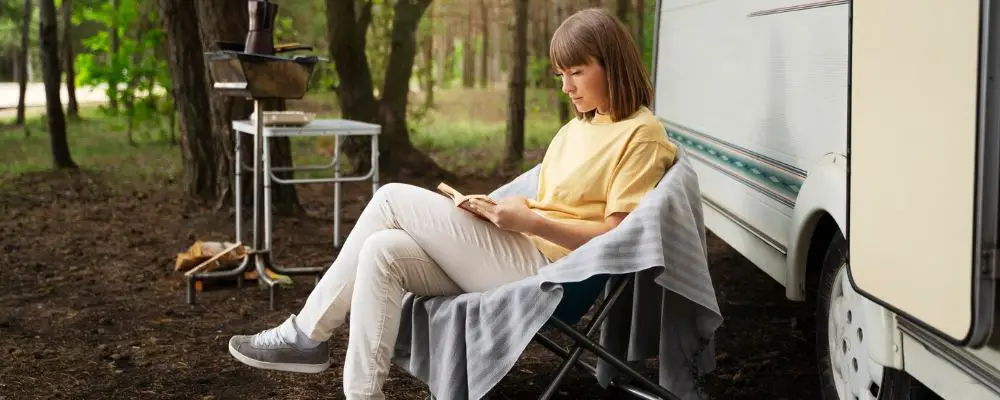
Personal Items
Don’t forget personal care, clothing, health items and creature comforts from home:
- Medications, prescriptions, medical devices with extra batteries
- Eyeglasses, sunglasses, contacts
- Personal hygiene and grooming products
- Clothing for all weather conditions
- Laundry supplies like detergent pods
- Protective footwear like hiking boots or rain shoes
- Swimsuits
- Jackets, hats, gloves
- Travel documents like identification, passports
- Pet food/supplies if traveling with animals
- Laptop, tablets, chargers
- Cell phones, cameras, film, chargers, backup batteries
- Paperwork like insurance, health records and camping reservations
The goal is bringing enough clothing, supplies and items to live comfortably on the road for however long your RV trip may be.
Entertainment Options
Don’t forget entertainment essentials to pass time on long drives or quiet camp nights:
- Portable Bluetooth speaker
- Books, e-readers preloaded with new titles
- Playing cards and board games
- Arts and crafts supplies
- Travel-size musical instruments like harmonicas, ukuleles
- Portable hammock
- Frisbees, balls, bats, gloves, etc.
- Fishing poles and tackle
- Bikes or scooters
- Download new podcasts and playlists
- Telescope for stargazing
- Birding binoculars and field guides
- Water guns, water balloons
- Portable cornhole or ladderball
- Card table and folding chairs
Packing fun entertainment options keeps everyone engaged and enjoying during downtime.
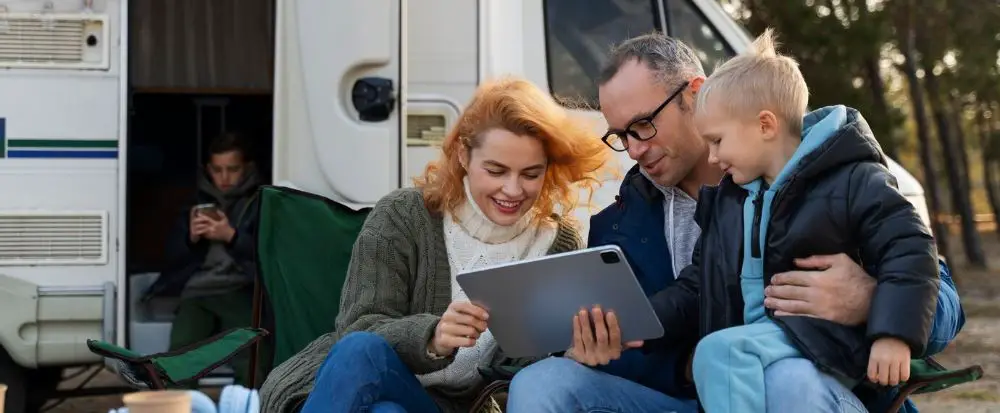
Packing Tips for Newbies
Packing up an RV for the first time can seem like a daunting task. It’s challenging to know how much to bring and how to organize a smaller living space on wheels. Fortunately, there are some key packing methods and tips RV veterans use to load their rigs that new RV owners can also apply for a smooth packing process. Follow this expert guidance to master RV trip preparation:
Create Detailed Packing Checklists – Make separate master packing lists for each area of the RV such as kitchen, bedroom, bathroom, storage bay, etc. Break down categories into sublists for critical gear like safety items, food, tools, first aid, clothing, bedding, entertainment and so on. Check off items as you pack. Thorough sublists help prevent forgetting something important.
Assign Designated Storage Areas – Decide what items will go in which cabinet, closet, bin or compartment. Assign kitchen goods to galley cabinets, toiletries to the bathroom, tools to the storage bay, etc. Have storage spots mapped out ahead of time for each category on your packing checklist to help load methodically.
Label All Gear – Use masking tape, sticky labels, or permanent marker to identify boxes, bags and bins holding different types of items. Write what category it contains and which RV compartment it should go in. Labels reduce unpacking confusion later when trying to find things.
Use Organizers and Packing Aids – Space is limited in an RV, so use every square inch efficiently. Pack items in organizer cubes, shelves, hanging bags and multipurpose containers to save space. Compress off-season clothing into vacuum bags. Use padded organizers to prevent shifting. Take full advantage of all storage nooks.
Load Heavy Items Low – Pack the heaviest gear like tools, canned goods, books, etc. in low cabinets, bins and floor compartments. Avoid putting heavy weights on upper shelves or in overhead areas. Concentrate heavy items in the center rather than far front or rear. Proper weight distribution contributes to RV stability.
Distribute Weight Evenly – Balancing loading evenly from side to side and front to back is crucial. Split weight concentrations across multiple bays and locations to prevent uneven lean or sway while driving. Heavier items on one side can affect handling. Check each compartment to aim for evenly balanced loads.
Keep Emergency Gear Handy– Flashlights, first aid kits, fire extinguishers and other critical emergency gear should be readily accessible, not packed away in rear compartments. Store them in quick-reach areas like beneath seats or in the front cab area. You want to be able to access emergency equipment immediately if needed, without having to unpack the entire RV.
Pack Most-Used Items Conveniently– Position items you’ll need most often during camping like cookware, outdoor chairs, tools, hiking shoes, firestarter, games, etc. right inside the doorway or in slide-outs for easy access. Less used items can go in harder-to-reach corners. Think about grab-and-go convenience when deciding where to place different supplies.
Inspect Container Securement– Make sure all gear bags, plastic bins, coolers and tubs are securely closed, latched and leakproof. Look for split seams, broken zippers and loose lids. Strap down or secure sliding items. Absorbent pads can protect against spills. Loose items rolling around while driving are dangerous projectiles.
Empty Tanks Before Departure– Drain gray and black water tanks before an extended trip to increase cargo capacity and reduce vehicle weight. Every gallon adds 8 pounds. Traveling with empty tanks allows you to pack more gear and supplies. Just locate dump stations along your route to empty tanks when needed.
Do Pre-Departure Safety Walkthrough– Before moving the RV, do a final walkthrough of the entire interior and exterior to ensure all doors, hatches, slide-outs, cabinets, drawers and compartments are securely closed and locked. Check that all appliances are off and the fridge is secured. Verify external valves and ports are closed andcapped. Doing safety checks avoids costly damage if a door swings open or any equipment shifts in transit.
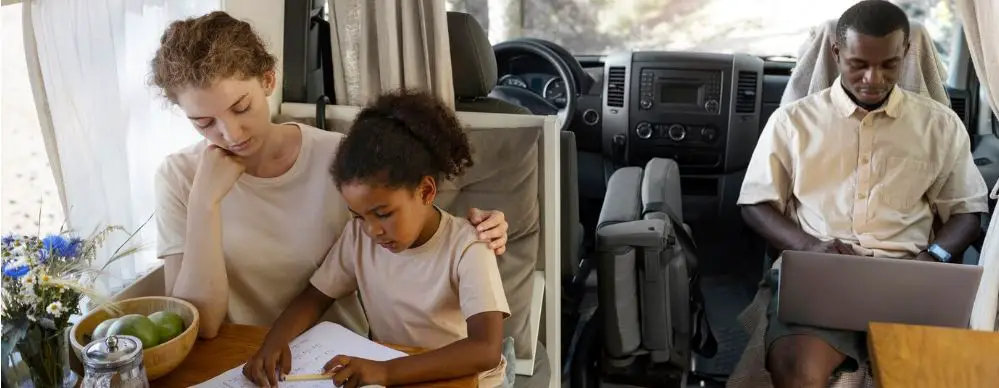
Unpacking and Setting Up Checklist
You’ve reached your campsite or destination after an exciting RV road trip. Now it’s time to transition your home on wheels from travel mode to fully immersive living quarters. Setting up camp properly takes some time and steps. Follow this comprehensive RV setup checklist when arriving and parking to create the ideal mobile retreat:
Position and Level RV – Identify the ideal parking spot at your site for RV access, views, shade, etc and pull in safely. Engage the parking brake and transmission lockout for security. Evaluate terrain and use leveling jacks and blocks to stabilize and eliminate sagging. Leveling is essential for appliances to operate properly. Test levels in different spots. Proper positioning and leveling prevents shifting, swaying or rolling once parked.
Extend Slideouts – Once parked, securely extend any slide-out sections on your RV to maximize living space. Make sure exterior awnings are retracted during this process. Inspect slideout function and ensure there are no obstacles blocking full extension. Secure any slide locks once opened fully. Open windows and roof vents as well for fresh air.
Connect Utilities– After parking, hook up to site electricity, water supply, and sewer or waste connections if available. Use campground cables, your own hoses and power cords to access utilities. Connect fresh water lines and monitor tank levels. Ensure tight seals to prevent leaks. Plug into electrical supply and test outlets. Inspect utility hookups regularly during your stay.
Unpack Gear – With RV parked, unpacked camping equipment needed for the site. Set up any tents, mats, portable furniture like chairs and tables. Position grills, outdoor cookware, and other living items where desired around the site to create your ideal living area. Inflate air beds and make sure tents and shades are securely staked and anchored.
Remove Interior Securement Items – Once parked, remove any interior bins, straps, blocks or bracing used to limit shifting during travel. Reorganize any items that may have moved around. Inspect for any new interior damage that may have occurred in transit and address immediately.
Install Bath Supplies – Hang up or unpack bath towels, mats, robes and personal hygiene supplies in the bathroom/shower area so they will be handy when needed. Check under all sinks for any leaks or plumbing issues. Restock toilet paper as needed.
Make Up Beds – No need to rely on hotel linens! Make RV beds cozy and welcoming by adding your own sheets, blankets, pillows and mattress toppers packed from home. Having familiar bedding helps everyone settle in comfortably.
Pre-Cool Refrigerator – To maximize refrigerator efficiency, pre-cool the unit prior to loading with food. Turn it on early to get the interior chilled down, then load refrigerated items as the last step after everything else is set up. Group similar items together for easy access.
Connect Entertainment Systems – After parking, set up TVs, speakers, WiFi hotspots, gaming consoles and any other electronics you packed for entertainment during downtime. Position speakers, test reception, connect to campground WiFi and tune TV channels from the new location so your gadgets are ready to enjoy.
Unpack Remaining Items – With the major setup steps finished, unpack and distribute remaining clothing, food, and personal supplies into corresponding RV cabinets, closets and storage compartments. Upload any apps or digital content needed for the trip like local maps or destination guides.
Do a Walkthrough – Finally, perform an RV systems check by turning on lights, testing power outlets, running water, flushing toilets, checking appliance functions, inspecting vents etc. Look for any issues arising after transit. Do a security check ensuring windows and doors are locked. Verify external access points are closed up.
Relax and Enjoy! – Grab a beverage and relax outside to soak in the views! You’ve completed setup and transformed the RV into a comfortable home away from home. Now the real adventure begins!
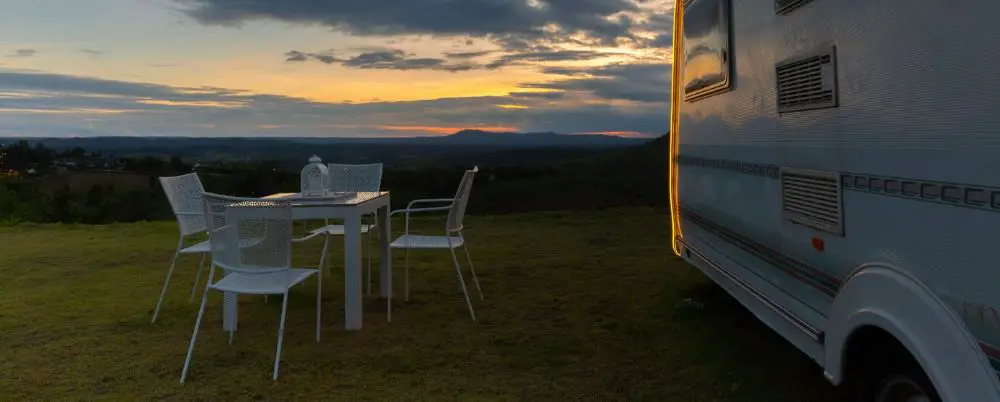
Post-Trip RV Care – Steps to Reset Your Rig After a Road Trip
Completing a fabulous RV adventure doesn’t mean the work is done! Some important steps should be taken after returning home from a road trip to reset your rig for the next journey ahead. Follow this essential RV post-trip maintenance checklist:
Dump Waste Tanks – One of the first priorities is emptying the gray and black water tanks at an RV dump station after concluding your trip. This allows you to unload waste, maximize cargo capacity for the trip home, and help prevent clogs or odors in tanks. Locate nearby dump stations along your return route.
Clean Top to Bottom – Thoroughly clean the RV inside and out after a trip when it’s easier to spot any new dirt, leaks or damage. Wash the exterior, including roof, windows, wheels, and internal storage compartments. Vacuum, mop, and wipe down the entire interior from ceilings to floors. Deodorize carpets and fabrics. Throw out any leftover food and empty the fridge.
Replenish Supplies – Check inventory and restock pantry items, paper goods, cleaners, non-perishables and other supplies that got depleted on your trip. Make a list to help remember odds and ends that need replacing. Stock up on fresh items like food, water, and ice before the next excursion.
Replace Batteries – Swap out any drained batteries in smoke alarms, CO detectors, safety devices and electronics. Check battery expiration dates and swap out any that are expired, even if still working. Test detectors to confirm they are operational.
Address Mechanical Issues – Deal with any mechanical problems, equipment malfunctions or part failures that occurred on your last trip immediately to prevent bigger issues later on. Consult your owner’s manual – you may be able to fix minor items yourself. Have an RV technician inspect any problems you couldn’t address on the road.
Check Systems and Seals – Give all appliances, roof components, windows, vents, seals, doors, outlets etc a thorough inspection and test. Clean fridge coils. Inspect slide-outs for damage. Look for any water intrusion or insulation issues. Identify any parts needing replacement now to avoid having problems arise mid-trip next time.
Monitor Tires – Check tire pressure and tread depth. Look for uneven wear, cupping, cracks or damage. Rotate tires if needed. Replace tires that are beyond 5-7 years old from the manufacture date regardless of tread. Keeping tires in optimal shape is vital for safety.
Update Checklists– Review packing lists, maintenance logs, and itineraries to see if any changes are needed based on lessons learned from your last adventure. Make notes so everything is up to date for your next trip.
Organize Gear for Storage – Clean, inventory, and organize all RV equipment and belongings before stowing until needed again. Use storage bins to prevent water damage, pests or mildew during storage. Charge electronics.Performing thorough post-trip care makes preparation much smoother when exciting new adventures summon you to hit the road again soon!
Taking the time to fully reset your RV after a road trip helps ensure it’s ready to roll worry-free for many more memories ahead.
Conclusion of RV Packing List
Hitting the road in an RV requires preparation. For first-time travelers, use this comprehensive packing list to stock your RV with everything needed for comfort, convenience and safety. By including plentiful food, clothing, bedding, bath essentials, camping gear and entertainment options, you can focus on the adventure ahead rather than fussing over missing supplies. Follow setup, loading and post-trip tips to get the most from your RV investment. Remember to personalize this list based on your particular RV model, journey length, destination and weather expected. With a well-planned, thoughtfully packed RV, you’ll be road trip ready for an unforgettable experience exploring the beautiful open road.
Frequently Asked Questions
What to pack for an RV road trip?
Some RV road trip essentials include linens, toiletries, non-perishable food, first aid kit, tools, spare parts, navigation gear, camp chairs, entertainment items, clothing for all weather, and RV-safe cleaning supplies. Tailor your list to trip length and activities planned.
How do I prepare for my first RV trip?
Tips for preparing for your first RV trip include testing systems, inspecting roof and tires, organizing supplies by storage area, loading evenly distributed by weight, securing all interior items, emptying waste tanks, double checking appliances are off, doing safety checks and making packing checklists.
What are the must-haves for RV camping?
Must-have RV camping items include leveling blocks, flashlights, first aid kit, power cords, hoses, waste valves, grill, camp stove, camp chairs, shade canopy, bug repellent, campfire starters, marshmallow sticks, games, headphones and hiking shoes.
What should I not pack in my RV?
Avoid packing flammable liquids, perishable foods, lead acid batteries, dangerous chemicals, oversized or overweight items, unsecured tanks/containers, valuables and more items than storage capacity. Only pack RV-safe approved items.
What items should be on my RV kitchen checklist?
An RV kitchen checklist should include cookware, cutlery, plates, cups, paper goods, pantry staples, can opener, knife, cutting board, coffee maker, cooktop, grill, cooler, water jug, cleaning and trash bags.
Is there an RV checklist app available?
Yes, there are some useful RV checklist apps including The Dyrt PRO, RV Checklist & Maintenance, RV Camping Checklist, RV Friendly, and RV Life. These help with pre-trip planning, maintenance, packing lists, campground directories and more.


